The unassuming, deadly webcap mushroom has a plain, tawny-brown cap and a brownish stem. It is easily overlooked, which is great, but it can also be confused with other edible species. The deadly webcaps are extremely toxic, though, as their name suggests.
There are quite a few reports of folks mixing this species with the much-sought-after chanterelle. It doesn’t actually look much like a chanterelle, but a beginner might make this mistake, and it is an extremely dangerous mistake. If you are new to mushroom foraging, be very clear on the differences between this and chanterelles. We explore this more in the lookalikes section.
It is crucial to note that the Cortinarius genus, to which the deadly webcap belongs, is notoriously difficult to identify, and many species within this genus are also highly toxic. As a result, experts advise against consuming any Cortinarius mushrooms, as the consequences of mistaken identification can be severe.
- Scientific Name: Cortinarius rubellus, Cortinarius orellanosus
- Common Names: Deadly Webcap, Fool’s Webcap
- Habitat: On the ground, mycorrhizal with conifers or hardwoods, depending on the mushroom species
- Edibility: Toxic; deadly
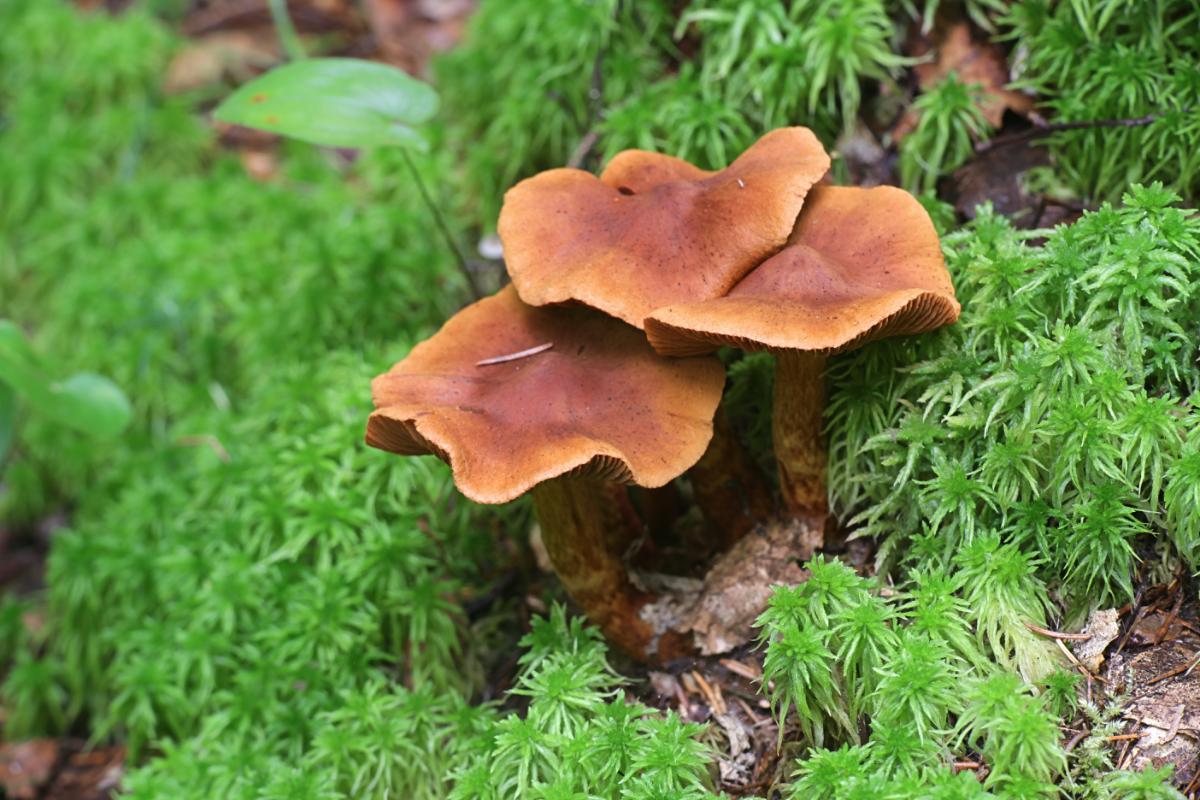
Jump to:
All About The Deadly Webcap
The deadly webcaps, Cortinarius rubellus and Cortinarius orellanosus, are part of a family of seven Cortinarius species collectively known as the Orellani. All the species within this group are highly toxic. They cause irreversible kidney failure that may lead to death. The most problematic part of this species’ toxicity is that symptoms often don’t appear for three days or even up to three weeks, so people don’t always know it is the mushroom causing the symptoms.
The two species listed in the previous paragraph are two known species of dangerous webcaps in North America. Cortinarius orellanosus was found in 2010 in Michigan. It is likely more widespread than this but there are no records for it. It was “discovered” by someone who got very ill from eating it. This is likely the only reason it has been clearly documented in North America; most people avoid brown mushrooms like this or Cortinarius species in general.
In this guide, we’re going to cover both of these species as the same because they could be twins. The primary difference is where they’re growing — with hardwoods or conifers.
Cortinarius species are commonly known as “webcaps” because they have a cottony veil across the gills when they’re young. This veil looks like a dense spiderweb, so these mushrooms are called webcaps. With age, the veil disappears, but usually, there is evidence it was there previously.
This family of fungi is very complicated. The Cortinarius genus is the largest in the world, with possibly more than 1000 species in it. It is also a very complicated genus with lots of lookalikes and species featuring very similar traits. There is also a need for more comprehensive research on the North American members of this genus. Regardless of the challenges, it is good to have a basic understanding of this family, especially this dangerous member of it.
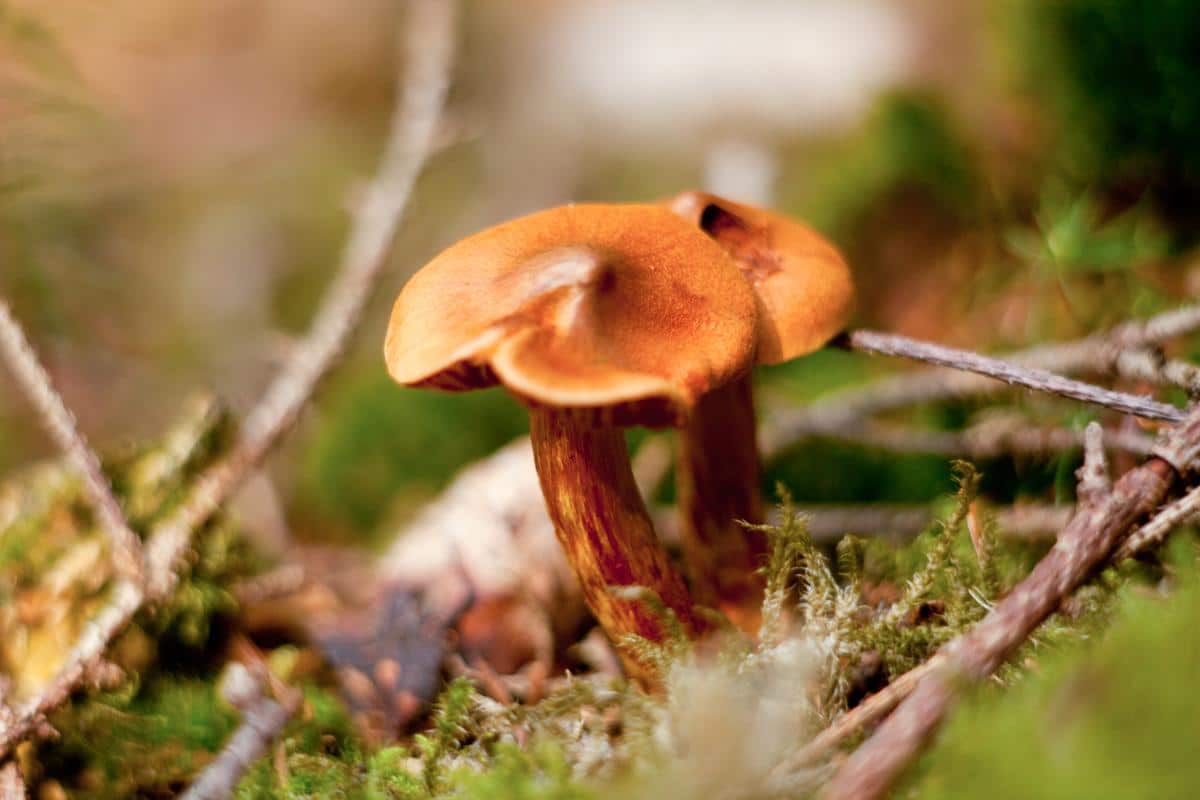
Cortinarius rubellus was first described and named by British naturalist Mordecai Cubitt Cooke in 1887. However, the mushroom’s taxonomic history is complex, as are many Cortinarius species. This group is still going through a lot of transitions! Over the years, the species has been known by several names, including Cortinarius orellanoides, Cortinarius speciosissimus, and Cortinarius rainierensis. The confusion surrounding its naming stemmed from the subtle variations observed in specimens collected from different regions, leading some researchers to believe they were distinct species.
Ultimately, through the meticulous work of mycologists like Klaus Høiland, the consensus emerged that these various names were indeed referring to the same deadly species. The specific epithet “rubellus” is derived from the Latin word meaning “reddish,” a reference to the mushroom’s distinctive coloration. The genus name “Cortinarius” is a reference to the partial veil or “cortina” that covers the gills in young specimens, a characteristic shared by most species within this diverse genus.
Cortinarius orellanosus is a newly described Cortinarius species with a single speicmen found in Michigan. It was discovered in 2010.
There is another very dangerous Cortinarius webcap mushroom that is referenced a lot, Cortinarius orellanus. This is a European species. Yes, the name is extremely similar to the new species found in Michigan (Cortinarius orellanosus). It was determined that the Michigan species is closely related to the European one, so it was given a common name to reflect that relationship. It’s also super confusing! This species is commonly called the Fool’s Webcap. Like the deadly webcap, it contains orellanine and can kill you.
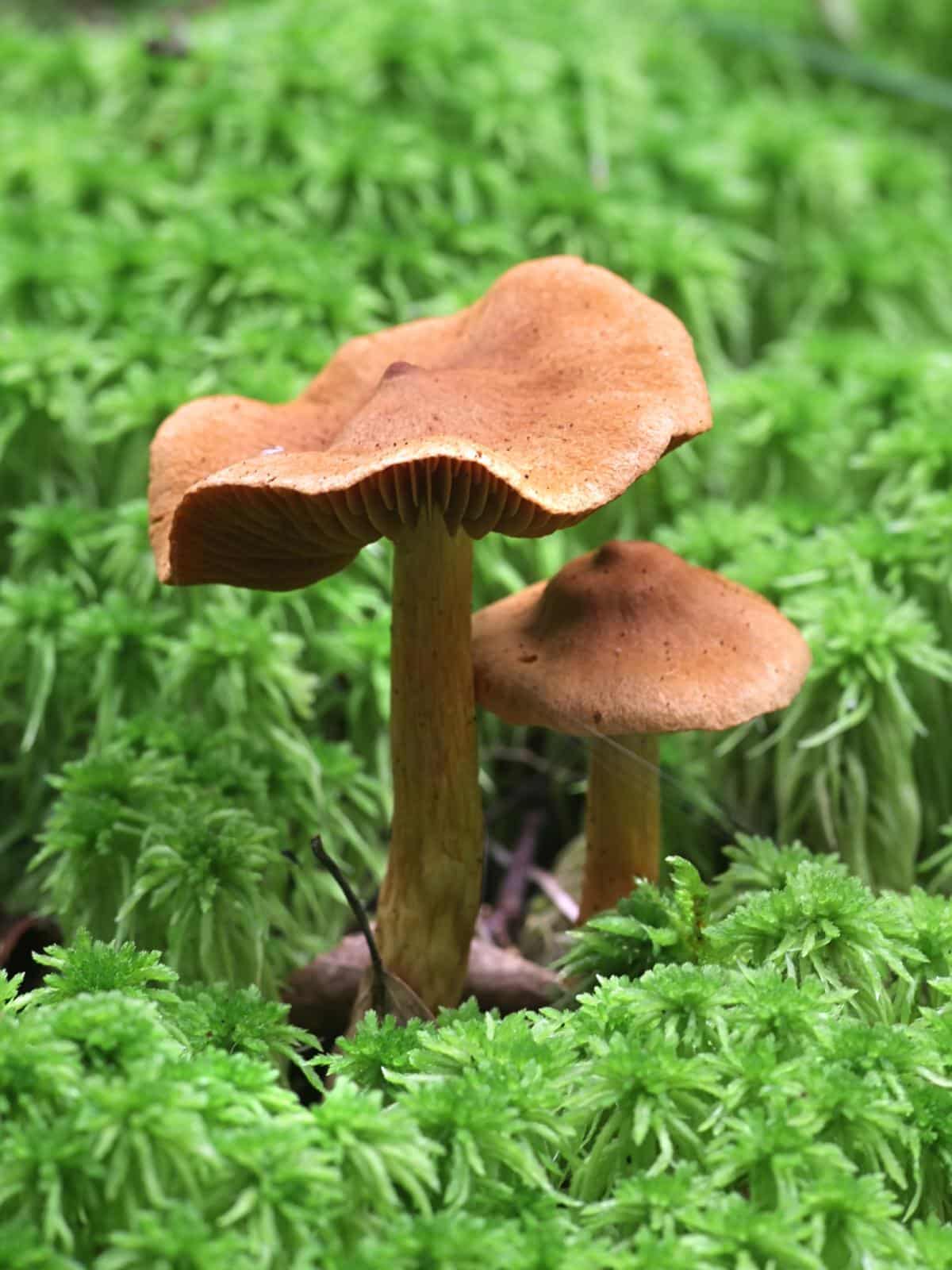
Deadly Webcap Identification Guide
Season
This species typically fruits from late summer to early winter.
Distribution and Habitat
The deadly webcaps have a possibly widespread northern distribution and are primarily found in high-latitude temperate to subalpine forests throughout the Northern Hemisphere. In North America, C. rubellus occurs in Canada and Maine, but is most common in the Pacific Northwest. There is a notable concentration of deadly webcap findings in Mount Rainier National Park.
C. rubellus is a mycorrhizal species that forms symbiotic relationships with the roots of coniferous trees, particularly pines and spruces. It favors moist, moss-rich environments and often grows in small clusters.
C. orellanosus has only been reported from Michigan but it is likely it has a more widespread distribution within Michigan and neighboring northern states. It grows with oaks and other hardwoods.
Both these species grow from the ground, never from wood or on trees. Their habitat, conifers vs. hardwoods, is the primary way to differentiate them in the field.
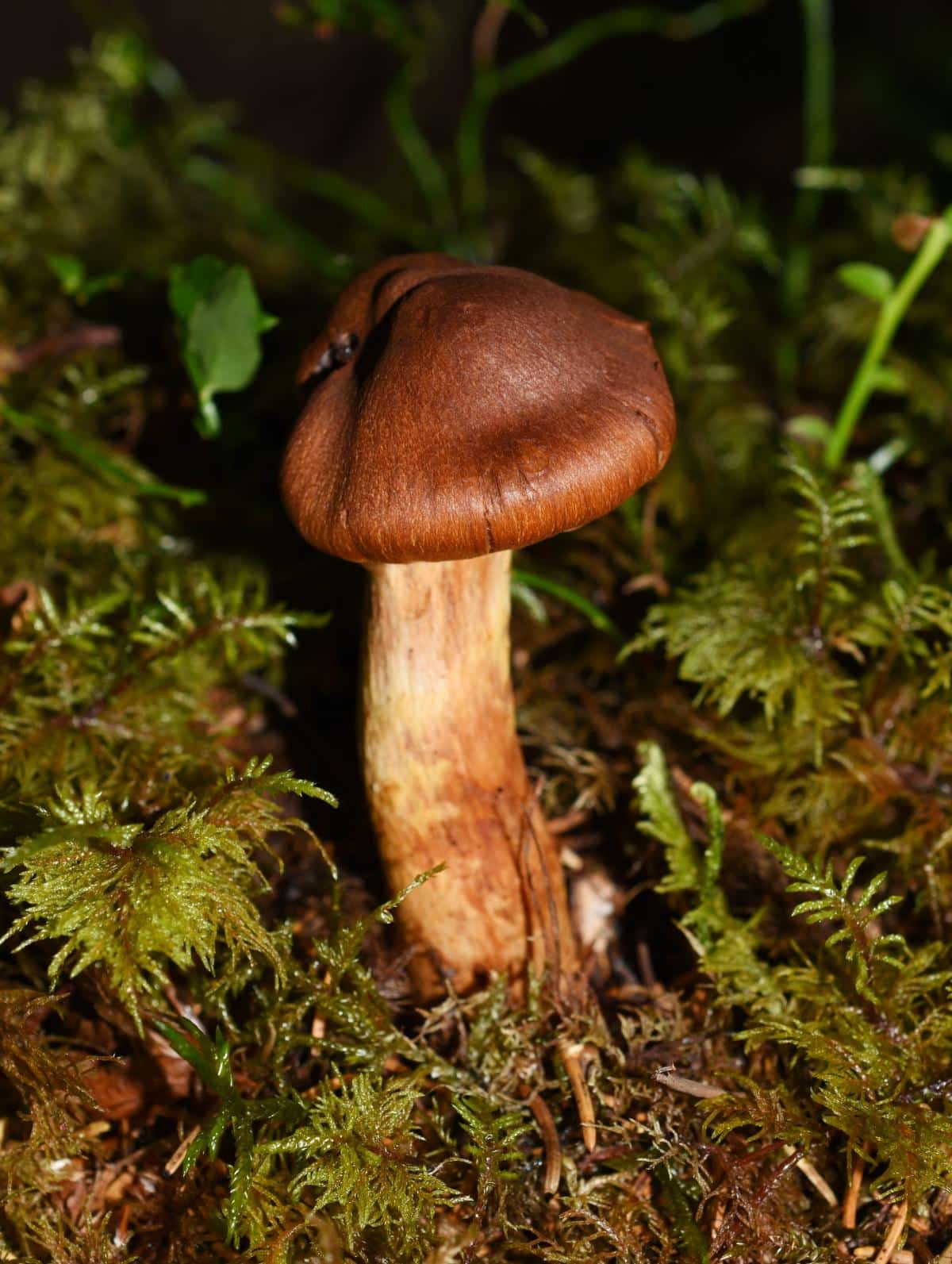
Identification Guide
Cap
The cap of the deadly webcap is typically 2.5 to 8 inches in diameter. It is initially rounded with a distinctive upraised center that gives it a cone shape. With age, it flattens out but retains a rounded, uplifted central “nipple” (called an umbo). Its surface is dry and slightly scaly.
The cap ranges in color from tawny-brown to an orangish-reddish brown to a deeper, date-brown hue. It is often lighter colored around the edges. The edges of the cap are often slightly rolled under, even in maturity.
Gills
When young, the gills are covered with a cobweb-like veil called a cortina. This partial veil is very distinctive. As the mushroom grows, the veil breaks to reveal the gills. Often, remnants of the veil are visible around the edges of the gills and on the stem.
The gills of the deadly webcap are initially pale yellowish or caramel-colored. With age, they transition to a deeper, rusty brown. They are attached to the stem.
Stem
The stem of the deadly webcap is typically 2.2 to 4.3 inches (5.5 to 11 cm) tall with a slightly bulbous base. It is often the same color as the cap or slightly paler and may have fragments of the cortina (the veil-like structure that covers the gills when young) covering it in the form of a yellowish, snake-skin-like pattern.
This mushroom’s stem is often not entirely straight; instead, it is slightly curved or bowed.
Flesh
The inner flesh of the deadly webcap is cream to pale orange-yellow in color. It does not change color when bruised.
Odor and Taste
The deadly webcap has a faint, radish-like odor.
Spore Print
The spore print is a rusty reddish-brown.
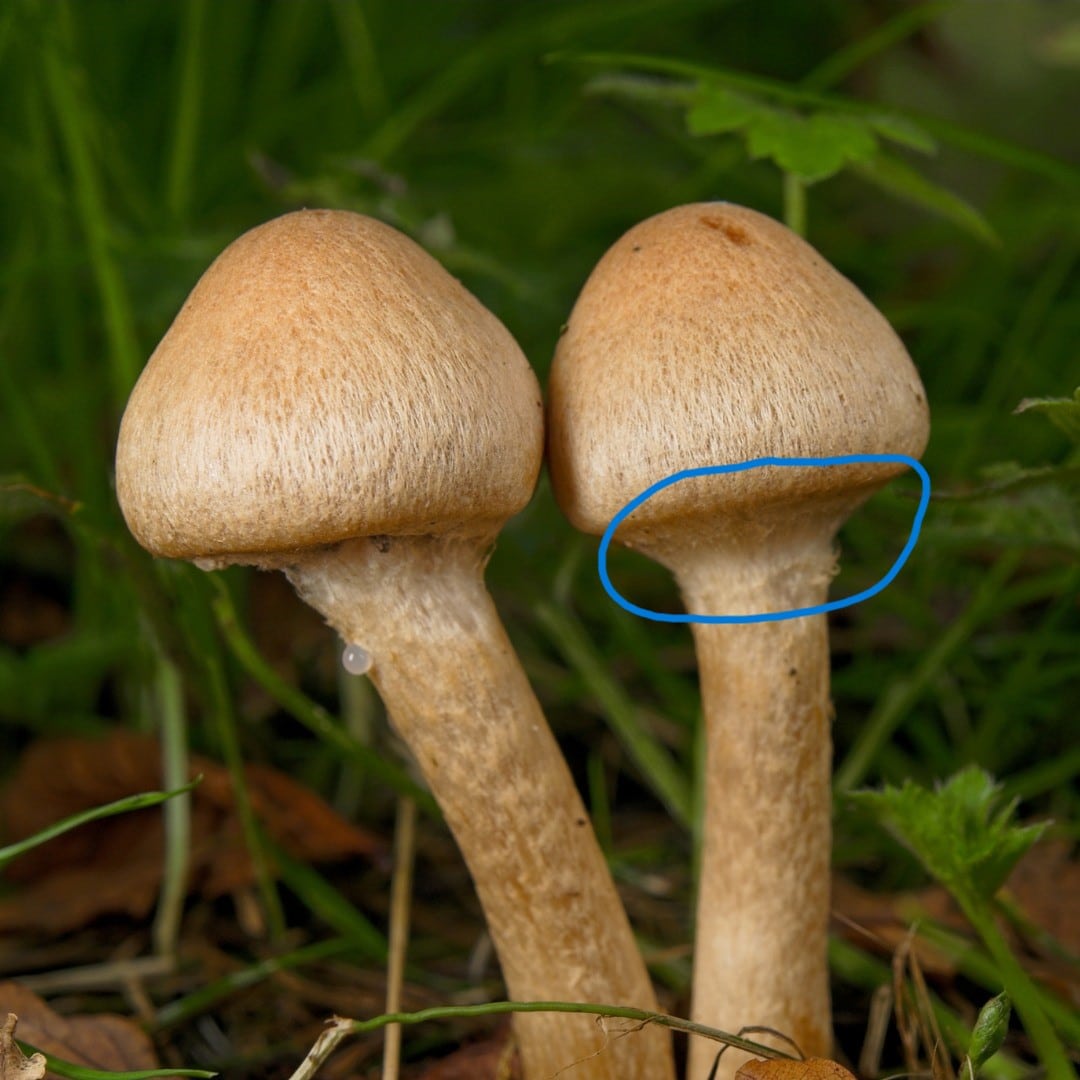
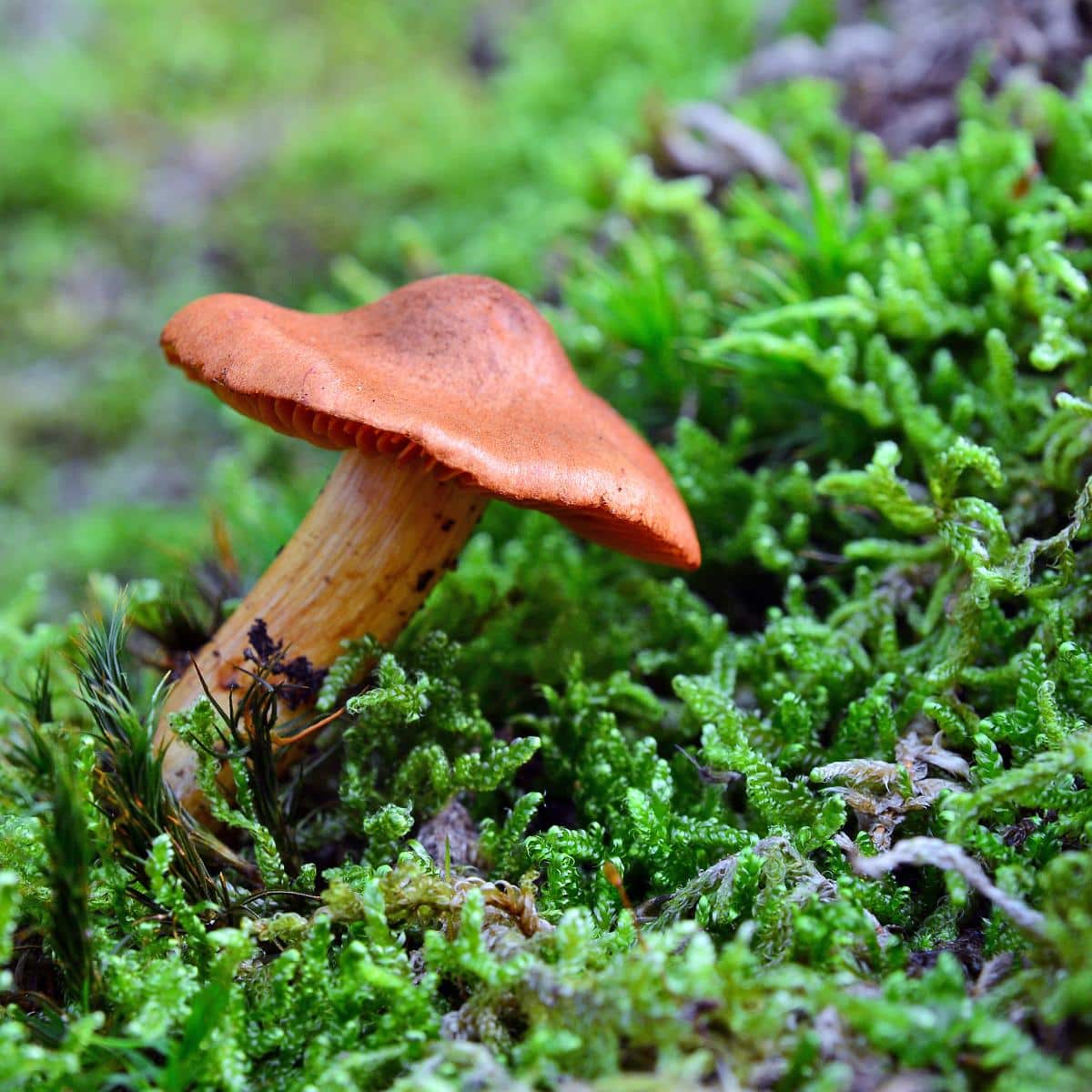
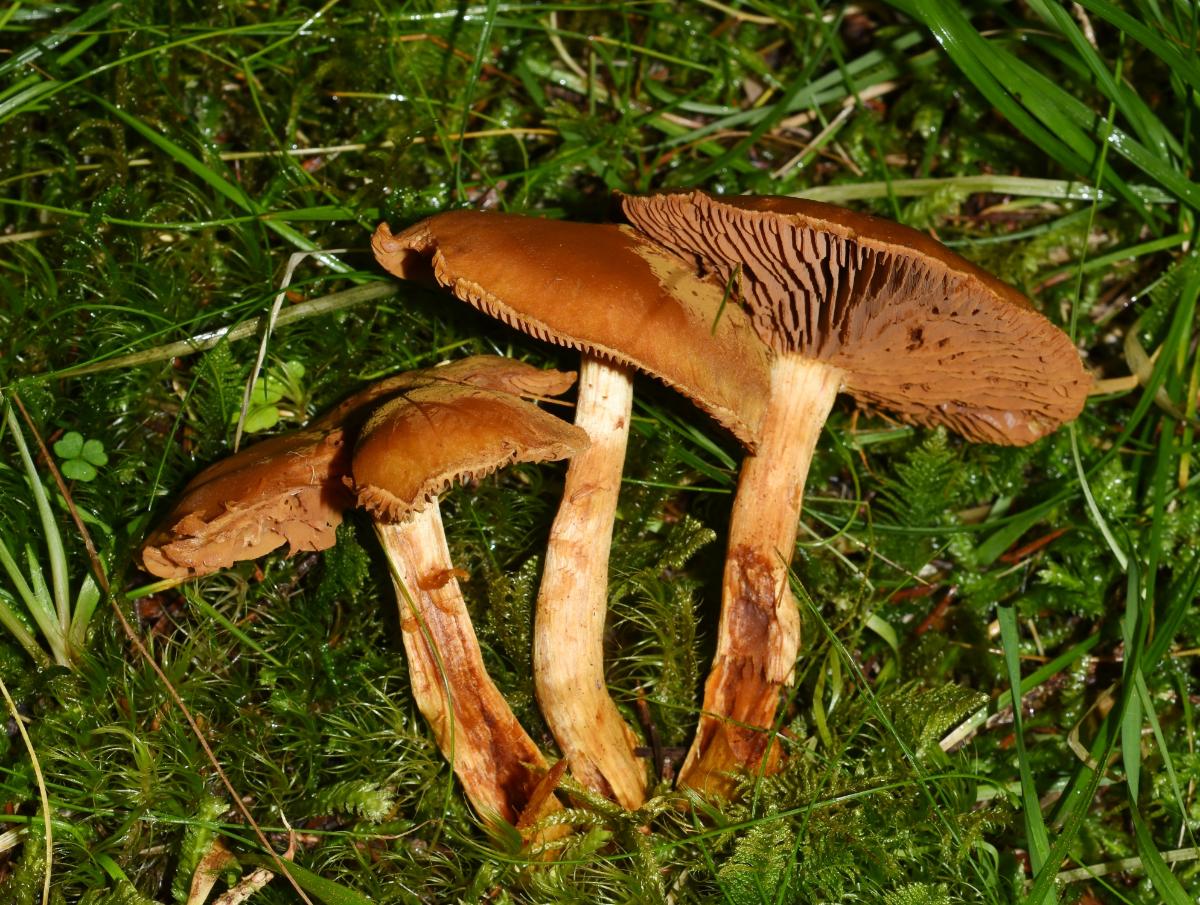
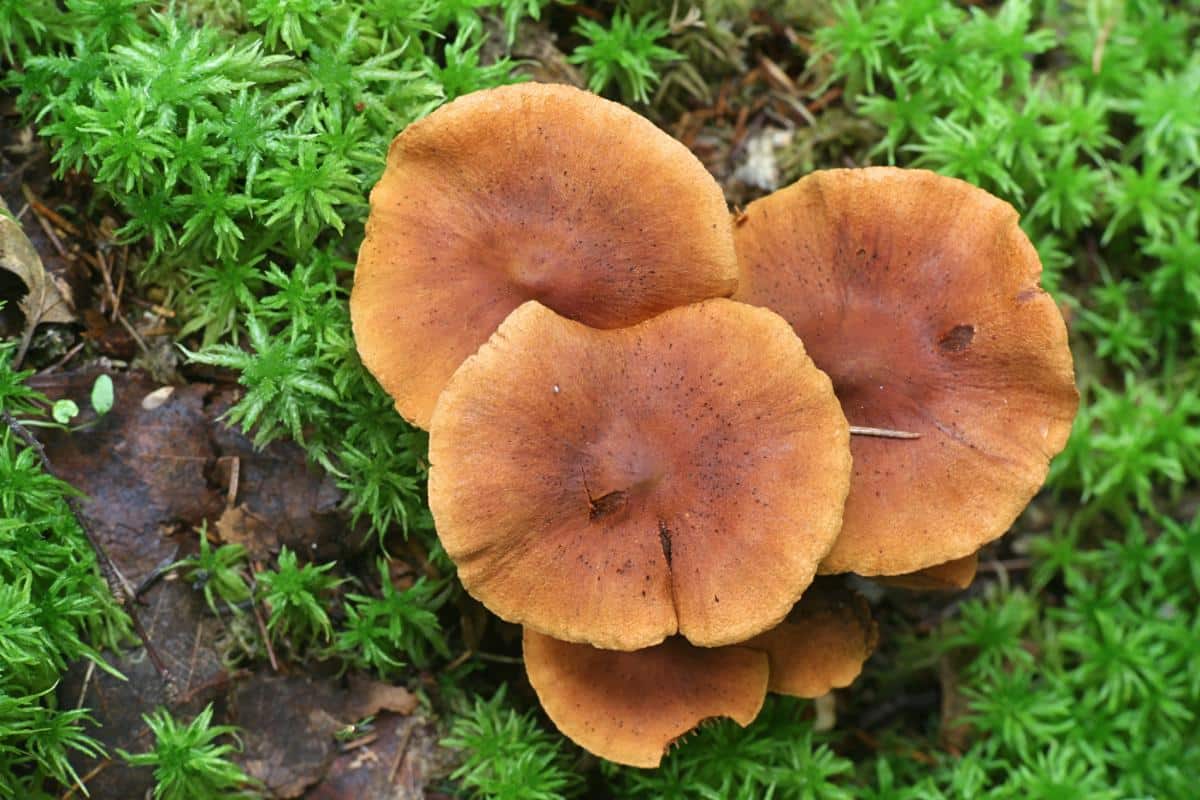
Deadly Webcap Lookalikes
One of the primary reasons the deadly webcap is so dangerous is its tendency to be mistaken for edible mushrooms, particularly the Chanterelle (Cantharellus spp).
Other Cortinarius
There are many other brown Cortinarius species that can be confused with this one. Due to its toxicity and the similarity to other species, it is not advisable to consume any Cortinarius mushrooms, just to be on the safe side.
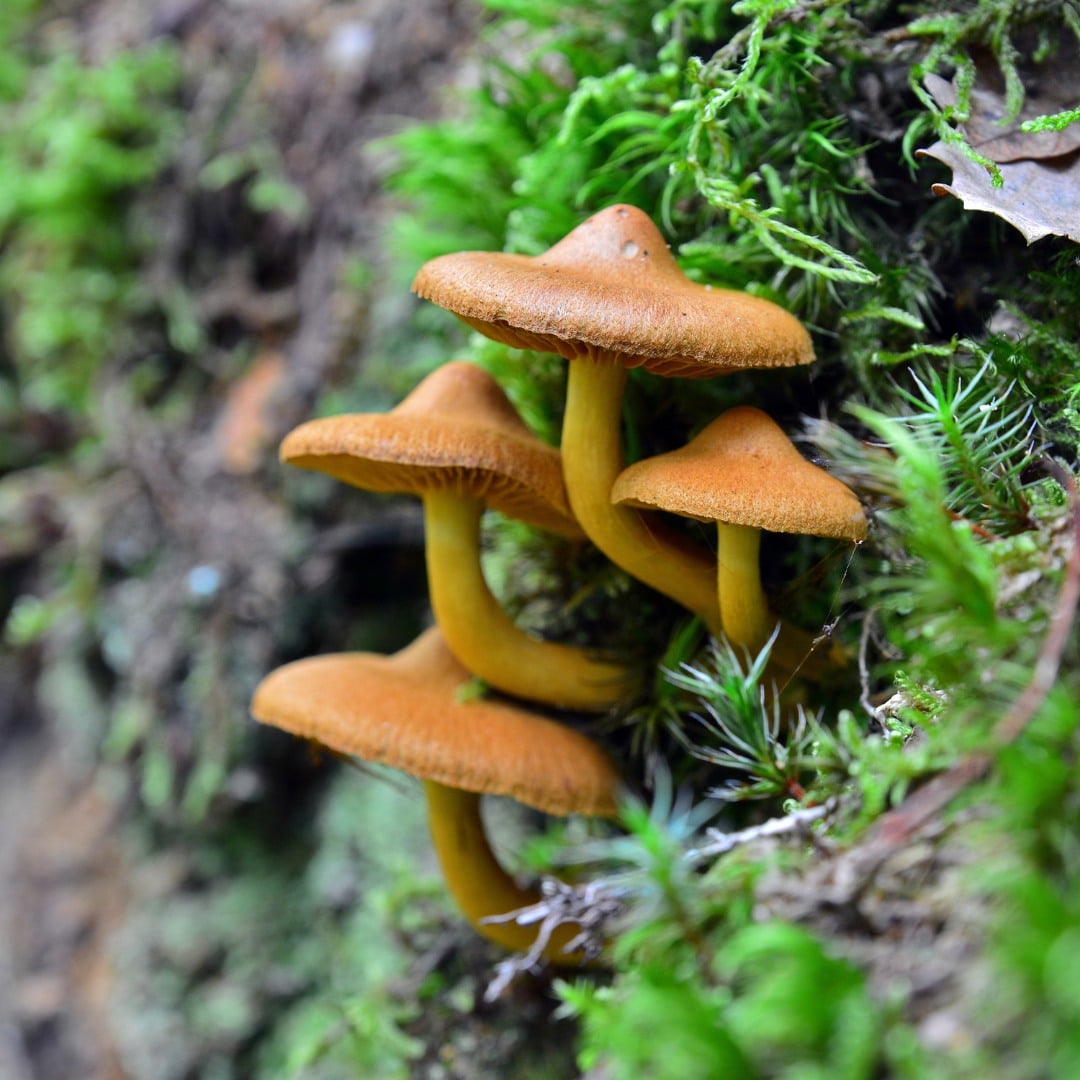
Chanterelles (Cantharellus spp.)
The chanterelle has a funnel-shaped cap with decurrent gills that form shallow, branching ridges rather than true gills. It is also uniformly egg-yellow in color, whereas the deadly webcap has a tawny-brown cap and distinct gills. An easy way to think about it is that the chanterelle is all yellow or golden colored while this deadly Cortinarius is all brown. Also, chanterelles never have veils over their gills or the remnants of one.
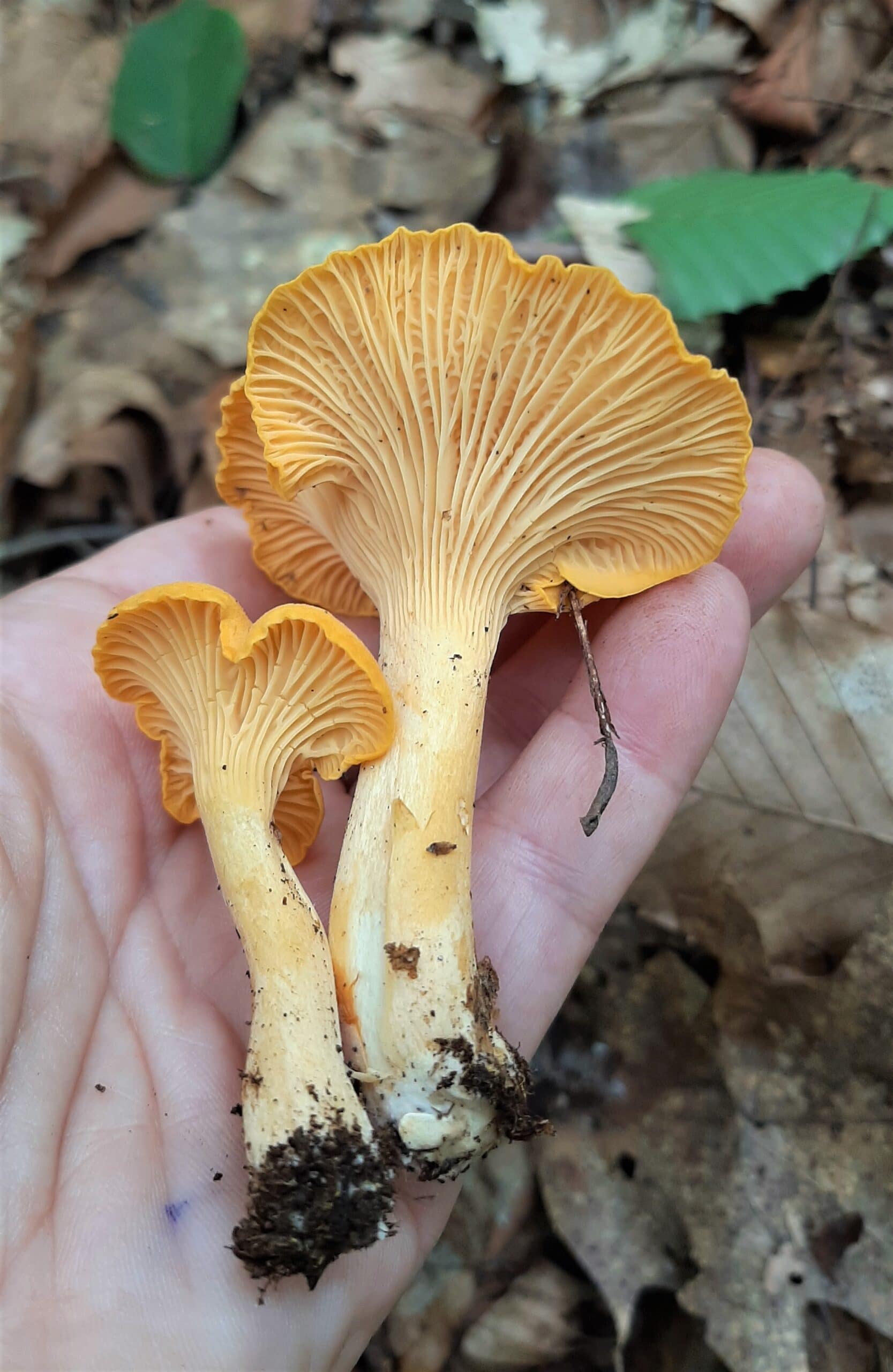
False Chanterelle
The false chanterelle is very orange in color and has strongly decurrent gills – gills that run down the stem a little way. This is very unlike the deadly webcap with brown caps and gills, and gills that are attached to the stem but don’t run down it. The flesh of the false chanterelle is orange, while the webcap has whitish or yellowish flesh. False chanterelles also grow from wood, not the ground, so that is another good way to tell them apart.
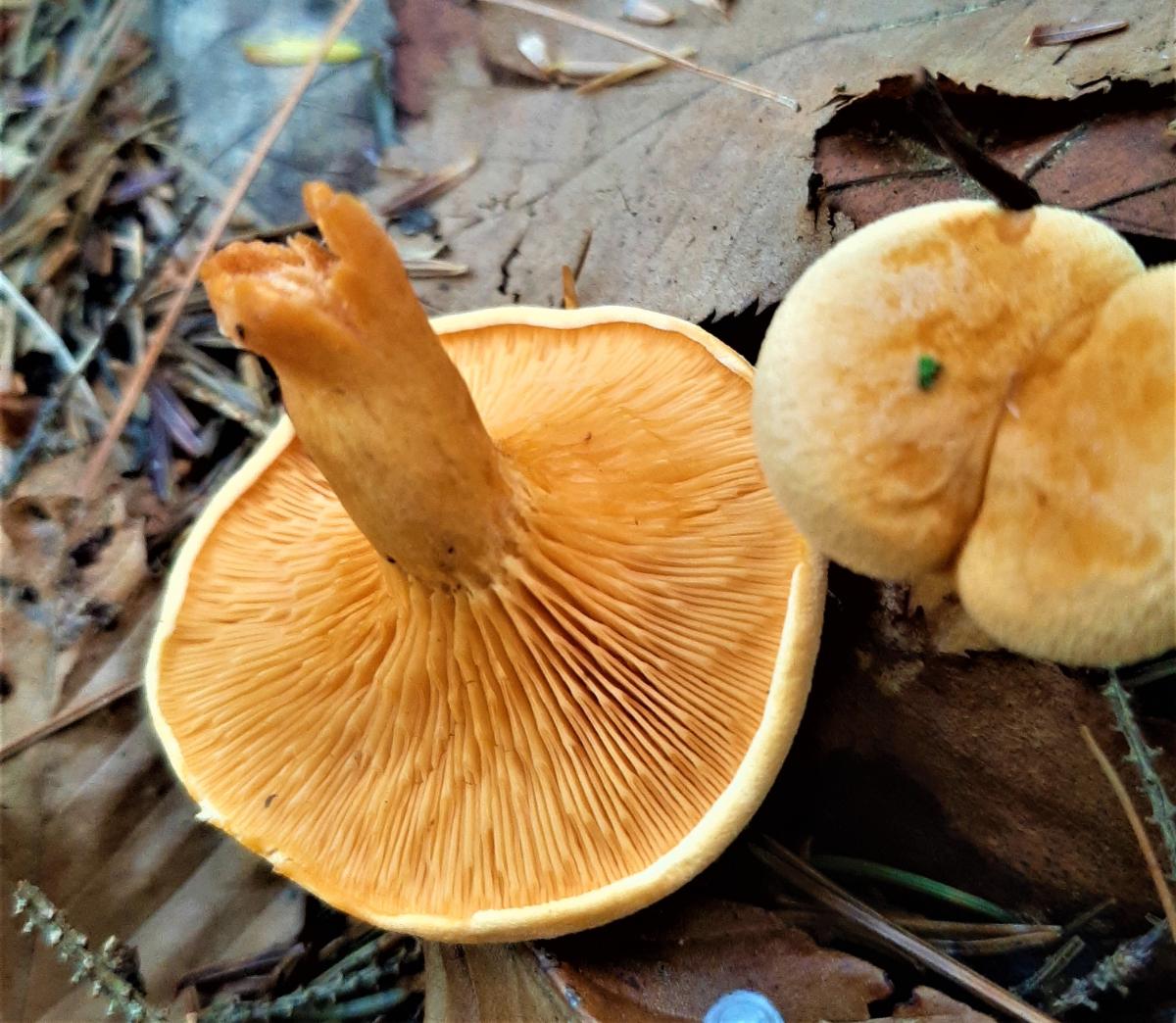
Brown Rollrim (Paxillus involutus)
The Brown Rollrim also has decurrent gills (gills that go down the stem) and a larger, generally darker cap that rolls inward at the edges. It also has a depressed center cap instead of an upraised cone. The gills on this species stain brown as does the flesh when it is exposed to air. The brown rollrim is also a seriously dangerous mushroom. It causes hemolysis seemingly arbitrarily, as some people eat it for years without issue, and then suddenly it is an issue, and they get very sick or die.
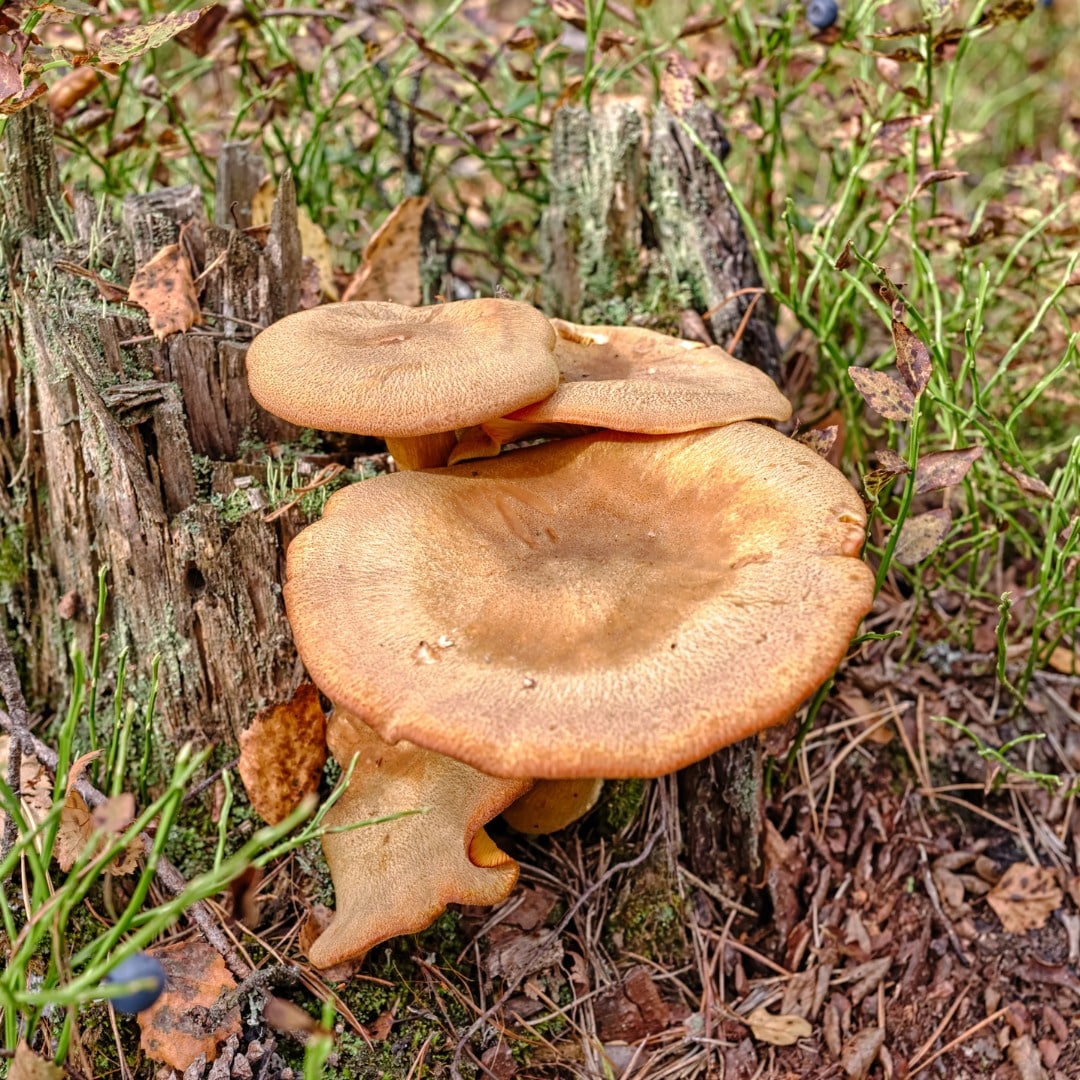
Deadly Webcap Toxicity and Poisoning Incidents
The deadly webcap’s infamy stems from its potent toxicity, which is attributed to the presence of a powerful mycotoxin called orellanine. This compound is responsible for the mushroom’s deadly effects. It targets and destroys the kidneys and liver. Ingesting even a small amount of the deadly webcap can lead to life-threatening organ failure.
The danger of the deadly webcap was first recognized in 1972, when several cases of poisoning were reported in Finland, resulting in permanent kidney damage for some victims. Since then, numerous incidents have been documented across Europe, particularly in Scandinavia and the United Kingdom. In Sweden, twenty-two people were poisoned by this mushroom between 1979-1993 and nine of them needed kidney transplants.
A case of poisoning in Poland in the 1950s was a mystery until a physician recognized everyone who was ill had eaten the Fool’s Webcap, Cortinarius orellanus. The poisoning epidemic affected over 100 people, and by the time it was figured out, several people had already died.
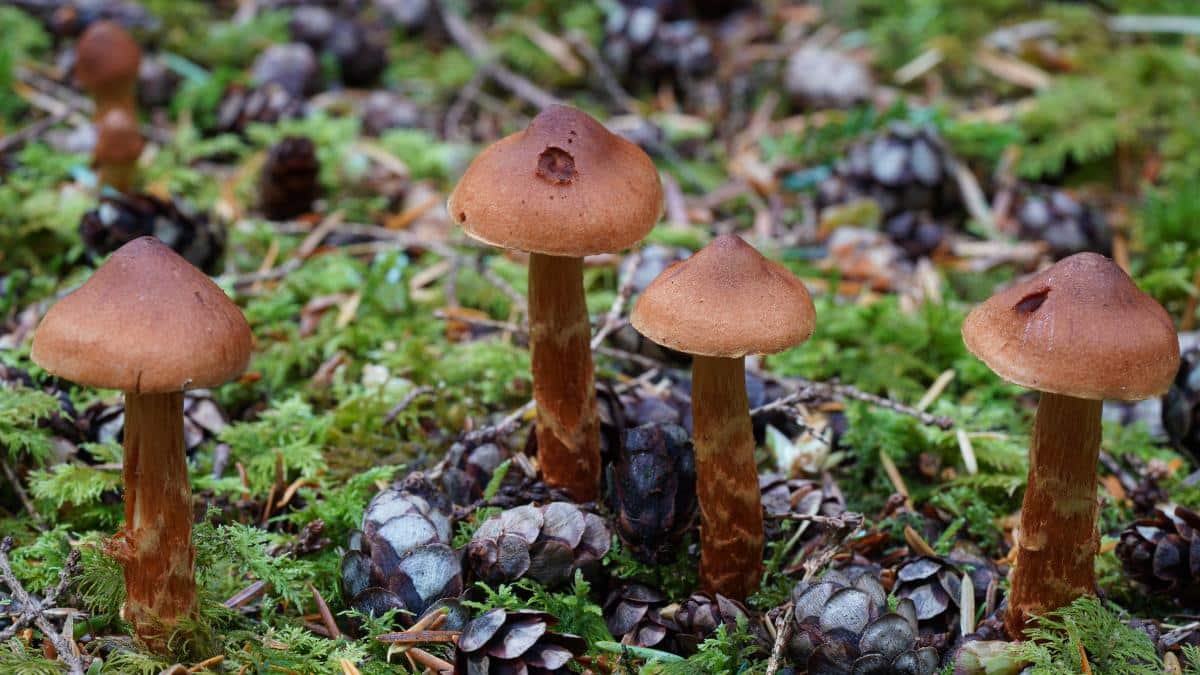
One of the most high-profile cases occurred in 2008, when author Nicholas Evans, his wife, and two other relatives were accidentally poisoned after mistaking the deadly webcap for ceps (Boletus edulis) while on holiday in Scotland. All four victims required kidney transplants. Evan’s wife Charlotte only had three mouthfuls of the mushroom and still needed a kidney transplant; that is how little is needed to be in very dangerous territory.
The symptoms of deadly webcap poisoning are often delayed, with flu-like symptoms and vomiting typically appearing two to three days after consumption. If left untreated, the condition can progress to total renal failure, which can be fatal. There is no antidote for this poisoning. However, prompt medical intervention, including dialysis and other supportive treatments, can often save the lives of those affected, as in the case of Nicholas Evans and his family.
One of the primary reasons this mushroom and the toxin orellanine are so dangerous is the delay in symptoms. When something takes 3 days—3 weeks(!) to show toxicity, you may forget what you ate or attribute the symptoms to something else eaten more recently. Also, the first symptoms are usually not acute.
The first symptoms are uraemia, the start of kidney failure, and include nausea, vomiting, fatigue, weight loss, and trouble concentrating. Nausea and fatigue are the most common symptoms, but these can be attributed to many other things. In more extreme cases, the patients lost the ability to urinate, which was a big indicator that something was seriously wrong with the kidneys.
This is a very thorough and excellent write-up of a Cortinarius rubellus (Deadly Webcap) poisoning from Quebec in 2020.
Common Questions About The Deadly Webcaps
Is the deadly webcap medicinal?
The deadly webcap is being studied to treat renal cancer. This may sound surprising since it causes renal failure, but new scientific processes are being developed which include the cytotoxin and use it in targeted ways to fight the cancer cells.
Is the deadly webcap hallucenogenic?
No. Not in the way a person may want. Instead of dancing unicorns, you will find yourself dancing straight to the ER. Unfortunately, and dangerously, several online sites associate this species with hallucinogenic mushrooms. It should never be consumed, for any reason.






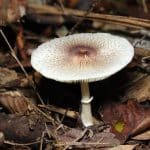
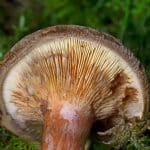
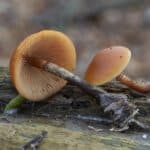
awesome says
I KNOW you can’t judge a mushroom by appearance but corts look the part of vile mushroom to me. The purple one is kind of neat tho. Just don’t mistake one of these for a blewit. But a chanty or a bolete? Hmm seems some people are extremely imprudent for that to happen..
Jenny says
Haha! I actually love corts because they’re so symmetrical — their gill arrangement is always perfect. As for mistaking it for things, you’d be surprised! Or maybe not lol. But blewit confusion is the most common and definitely understandable.
healthywz says
Thank you for this detailed and informative guide on identifying deadly webcaps. The comprehensive descriptions and high-quality images make it much easier to distinguish these dangerous mushrooms from other species.
Your emphasis on the importance of proper identification to avoid potential poisoning is crucial, especially for foragers and nature enthusiasts. The section on the symptoms of poisoning and what to do in case of exposure was particularly helpful.
This guide is an invaluable resource for anyone interested in mushroom foraging. Keep up the excellent work, and I look forward to reading more of your informative posts!